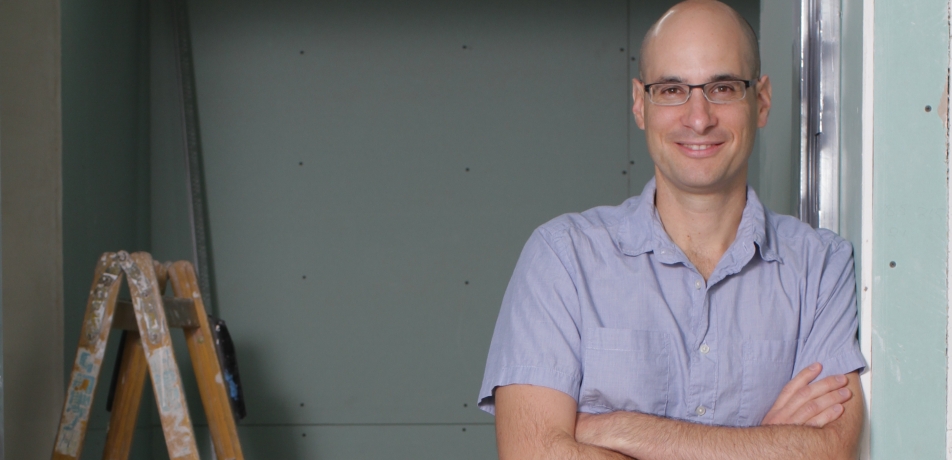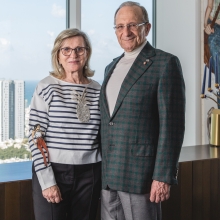Mapping out memory lane
How space and time help encode memories
People behind the science

We do a million routine tasks every day—from pouring our morning coffee to climbing into bed at night. Our brains know by rote just what to do by drawing from prior experience.
But rather than recording each re-run in the same set of neurons, it turns out that our brains actually record them in different places every time.
Dr. Yaniv Ziv, who joined the Department of Neurobiology last year, explores memory and how it changes with time, new experiences, and in disease. Until now, it has been technically impossible to track the activity of neuronal “ensembles” of memories over long periods of time. In his postdoctoral research at Stanford University, Dr. Ziv developed a new experimental method to observe thousands of neurons in the brains of live mice over the course of months: a tiny fluorescence microscope - strapped to the heads of mice like a coalminer’s headlight—that connects to implantable micro-endoscopic lenses. These lenses sense and record the activity of specific neurons and groups of neurons that “light up” when in use. The result: high-resolution images of cells deep within the living brain that show precise patterns of specific memories.
In this way, he investigated the activity of thousands of so-called “place” cells, observing them as the mice trod the same route in a maze day after day. Boring, monotonous, routine—absolutely. But the brain actually makes a garden assortment out of it: Dr. Ziv was surprised to find that each day the walk was encoded in a different subset of brain cells—with only about a 20 percent overlap among the subsets.
That suggests that place cells also include a time component, and it raises some questions about the complex ways that space, time, and memory all become integrated in our brains. “It may explain how the brain distinguishes between yesterday’s walk and that of the day earlier,” says Dr. Ziv.
For Alzheimer’s and other neurodegenerative diseases involving the loss of one’s space bearings, this research could hold great promise for improved understanding of just what goes wrong - and how to remedy the ailing brain. In his new lab at the Weizmann Institute, Dr. Ziv is now investigating long-term memory circuits in the part of the brain that contains both memory and place cells. That, he hopes, will elucidate how not just place, but time as well, are mapped in our memories.
Dr. Ziv’s work will come under the rubric of the new Azrieli Human Brain Institute (AHBI), established by a recent gift of the Azrieli family of Canada and Israel. The AHBI will fund studies in the physiology, biochemistry, and functioning of the human brain and spearhead studies on brain diseases toward devising improved therapies and cures. The AHBI will work in concert with the new Israel National Center for Brain Imaging and Stimulation, a government-funded entity to be led the Weizmann Institute and in partnership with the Technion and Sourasky Medical Center.
The clip below shows chronic imaging of neuronal activity in the hippocampus of a freely behaving mouse—a new approach to the study of neural coding of long-term memory. Some of these neurons encode for the position of the animal within the environment.
https://www.youtube.com/watch?v=uKJ-9wJjllI
Dr. Yaniv Ziv is supported by the Murray H. & Meyer Grodetsky Center for Research of Higher Brain Functions, the Irving I Moskowitz Foundation, the Adelis Foundation, the Hymen T. Milgrom Trust Donation Fund, the Croscill Home Fashions Charitable Trust, the Harold and Faye Liss Foundation, and the Lulu P. & David J. Levidow Fund for Alzheimers Diseases and Neuroscience Research.
He is the incumbent of the Dr. Daniel E. Koshland Career Development Chair







